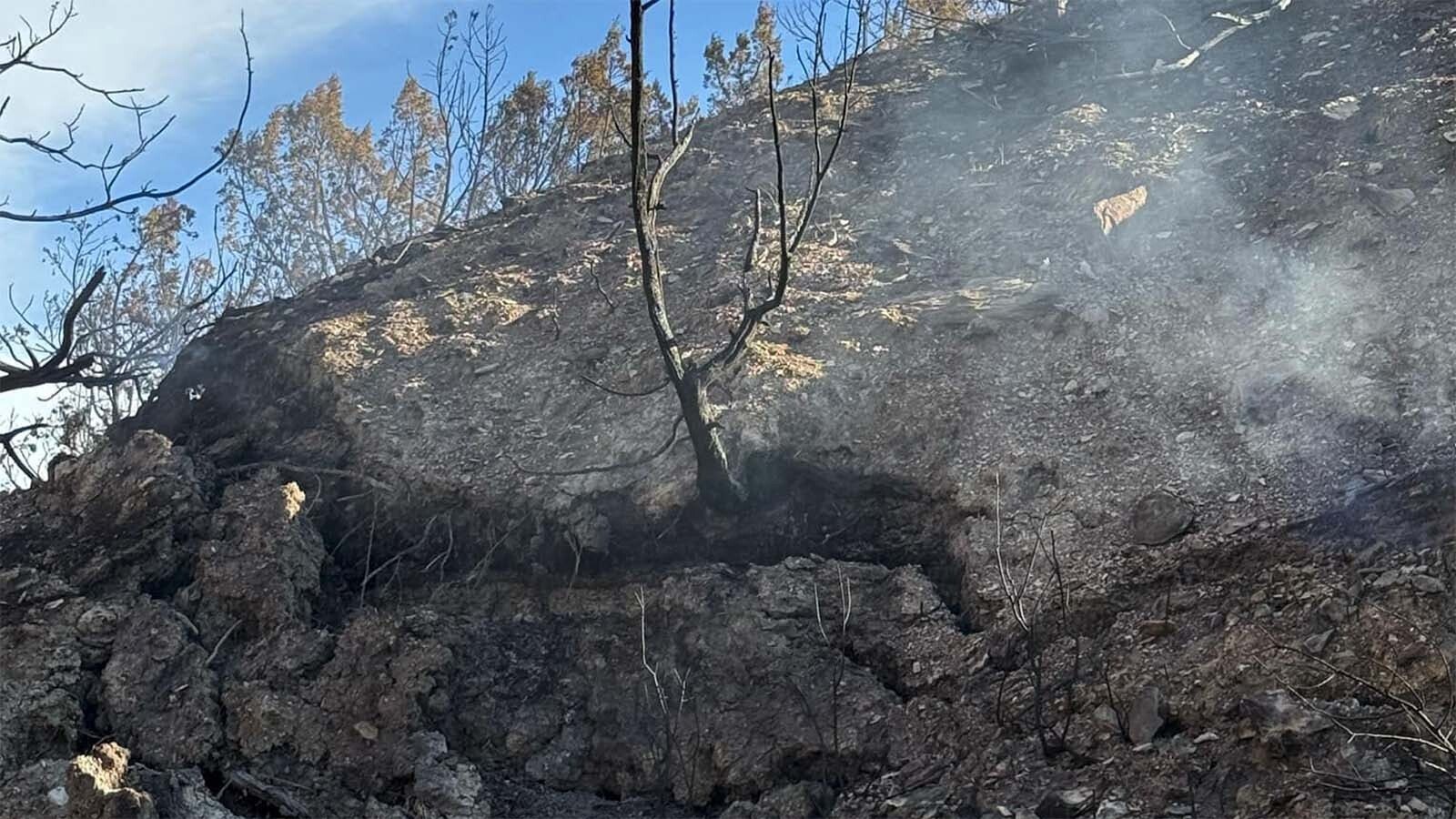Manufactures who think their products are “bear-resistant” may not have put them up against the grizzlies in West Yellowstone, Montana, to test those claims.
At the Grizzly and Wolf Discovery Center, bears are turned loose on garbage cans, coolers and other containers. Frequently cheered on by crowds of spectators, they’ll bite, pry, stomp, claw, maim, toss and otherwise attempt to demolish the containers, trying to get at goodies that the center’s staff have put inside.
Containers that can last an hour with one of the apex predators on the planet pass the test and are certified “bear-resistant” (there’s really no such thing as “bear-proof”).
“When we started testing 22 years ago, maybe 10% of the products passed. Manufacturers had no idea how strong, how smart and how food-driven grizzly bears are,” facilities manager Randy Gravatt told Cowboy State Daily on Friday.
He knows well the importance of bear-resistant containers. Gravatt lives in Island Park, Idaho, which is near Yellowstone National and rife with free-roaming grizzlies. And he’s worked at the Grizzly and Wolf Discovery Center, where some grizzlies are kept in captivity, for 26 years.
Mechanical Testing Didn’t Cut It
At one time, products were mechanically tested for bear resistance.
“It was all done mechanically in the past,” he said. “A set weight would fall (onto the containers) from a set height. Sometimes they would use a pointy weighted item to simulate a bear’s teeth.”
But that didn’t even come close to matching the true brawn, brains and ferocity of determined grizzly bears.
Fortunately, a better way to test products came about.
The center was initially a public education facility and sanctuary for rescued grizzly bears.
Grizzlies almost always come to the center as cubs captured by state game agencies after some sort of human conflict, Gravatt said. Bears come from Wyoming, Montana, Idaho, Canada and Alaska.
“We have room for up to eight bears, and currently we have six,” he said.
A few years after opening, the Grizzly and Wolf Discovery Center was contacted by the U.S. Geological Survey’s Interagency Grizzly Bear Study Team (IGBST). The team includes personnel from the Wyoming Game and Fish Department and conducts research and helps guide management policy for the grizzly population in the Northern Rockies.
The IGBST was wondering if the center would be willing to let its grizzlies put supposedly bear-resistant products to the test. The center was happy to oblige, and a partnership was born.
The grizzlies became official product testers.
Start Them Young
It’s best to start grizzlies young in the product-testing role, Gravatt said. New cubs are usually presented with a cooler, secured only with zip-ties.
Inside is some sort of food reward, such as fish, dog biscuits or peanut butter and honey.
Once a young griz learns to defeat zip-ties, the center’s staff ups the ante with a zip-tie on one corner of the cooler and a padlock on the other, and then coolers with both sides secured by padlocks.
As the grizzlies grow in their product-testing careers, they’re presented with garbage cans, backpack canisters and all manner of other gear and equipment.
Gravatt said the most interesting product he’s seen come through was a Kevlar backpack. At first it failed the test, so its maker “stiffened it up with more Kevlar,” and it passed.
The standards for a passing bear-resistant certification are rigorous.
Coolers must survive a full 60 minutes of contact with a hole no larger than a quarter-inch. Metal containers can’t have a gap of any more than a half-inch. And garbage cans must come through the mauling with latches that still functioning and no hole or gap more than an inch.
Last year, roughly 1,000 garbage cans touted as bear-resistant and distributed across Teton County, Wyoming, were discovered actually not to be after some were tested at the center.
Grizzly ‘CPR’
When presented with a container, grizzlies are mostly likely to start off with a puzzle-solving approach, Gravatt said.
The bears display enough intelligence to think things through, and try to gnaw, pry and find weak points or gaps large enough to get their claws into.
But, if the brainy approach doesn’t work, griz will turn to pure brawn.
On garbage cans especially, the grizzlies like to use “the CPR method,” Gravatt said.
“They put their front paws together and just jump up and down on it,” he said. “That thing starts to flex, and that might cause a gap to open up between the canister and the lid.”
Frustrated grizzlies can get downright brutal with the hapless products.
“Perhaps they’ll even start throwing them up in the air, so they’ll land either on a rock or on the concrete edge of the pool we have in our 2-acre habitat,” Gravatt said.
Spectators love it, he added.
“More often than not, people are rooting for the bear. If the bear gets in to the container, you’ll hear a roar from the crowd,” he said.
Because a particular bear might get too bored or frustrated before the hour is up, sometimes different bears are rotated in and out “to ensure that full 60 minutes of contact,” Gravatt said.
Plenty Of Work For Bears
There’s no shortage of work for the grizzlies. The center tests an average of 60 products a year, with the sessions running between April 1 and Oct. 1.
The center’s grizzlies get fed year-round, so they don’t hibernate. But testing during the colder months might not be accurate or fair, because materials become brittle in the cold, Gravatt said.
As to whether black bears will ever be brought into the action, that’s a possibility, he said.
“We are in the process of building a new habitat and dens for black bears, but that’s a couple of years down the road, easily,” Gravatt said.
Mark Heinz can be reached at mark@cowboystatedaily.com.









